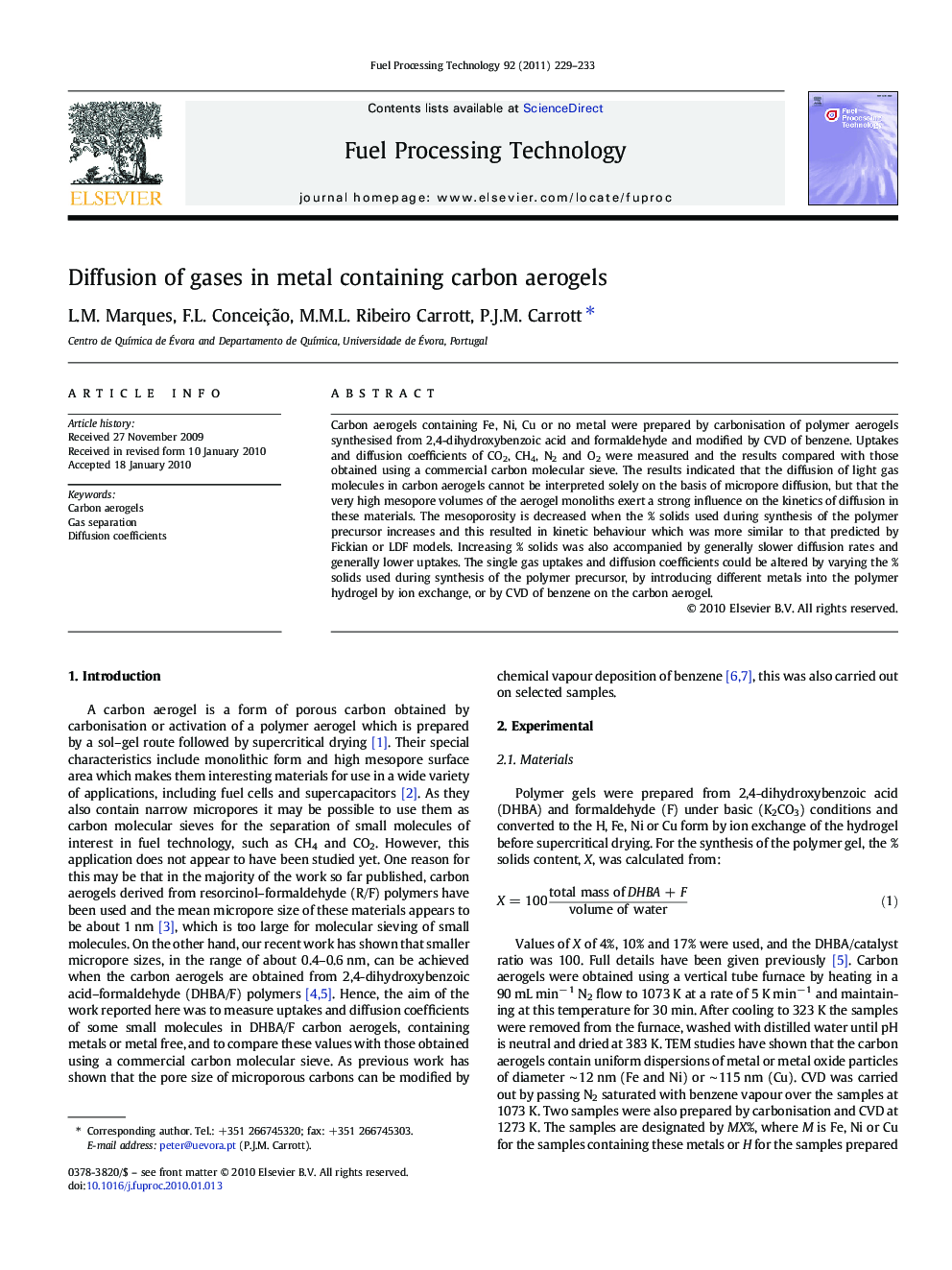| Article ID | Journal | Published Year | Pages | File Type |
|---|---|---|---|---|
| 210475 | Fuel Processing Technology | 2011 | 5 Pages |
Carbon aerogels containing Fe, Ni, Cu or no metal were prepared by carbonisation of polymer aerogels synthesised from 2,4-dihydroxybenzoic acid and formaldehyde and modified by CVD of benzene. Uptakes and diffusion coefficients of CO2, CH4, N2 and O2 were measured and the results compared with those obtained using a commercial carbon molecular sieve. The results indicated that the diffusion of light gas molecules in carbon aerogels cannot be interpreted solely on the basis of micropore diffusion, but that the very high mesopore volumes of the aerogel monoliths exert a strong influence on the kinetics of diffusion in these materials. The mesoporosity is decreased when the % solids used during synthesis of the polymer precursor increases and this resulted in kinetic behaviour which was more similar to that predicted by Fickian or LDF models. Increasing % solids was also accompanied by generally slower diffusion rates and generally lower uptakes. The single gas uptakes and diffusion coefficients could be altered by varying the % solids used during synthesis of the polymer precursor, by introducing different metals into the polymer hydrogel by ion exchange, or by CVD of benzene on the carbon aerogel.
